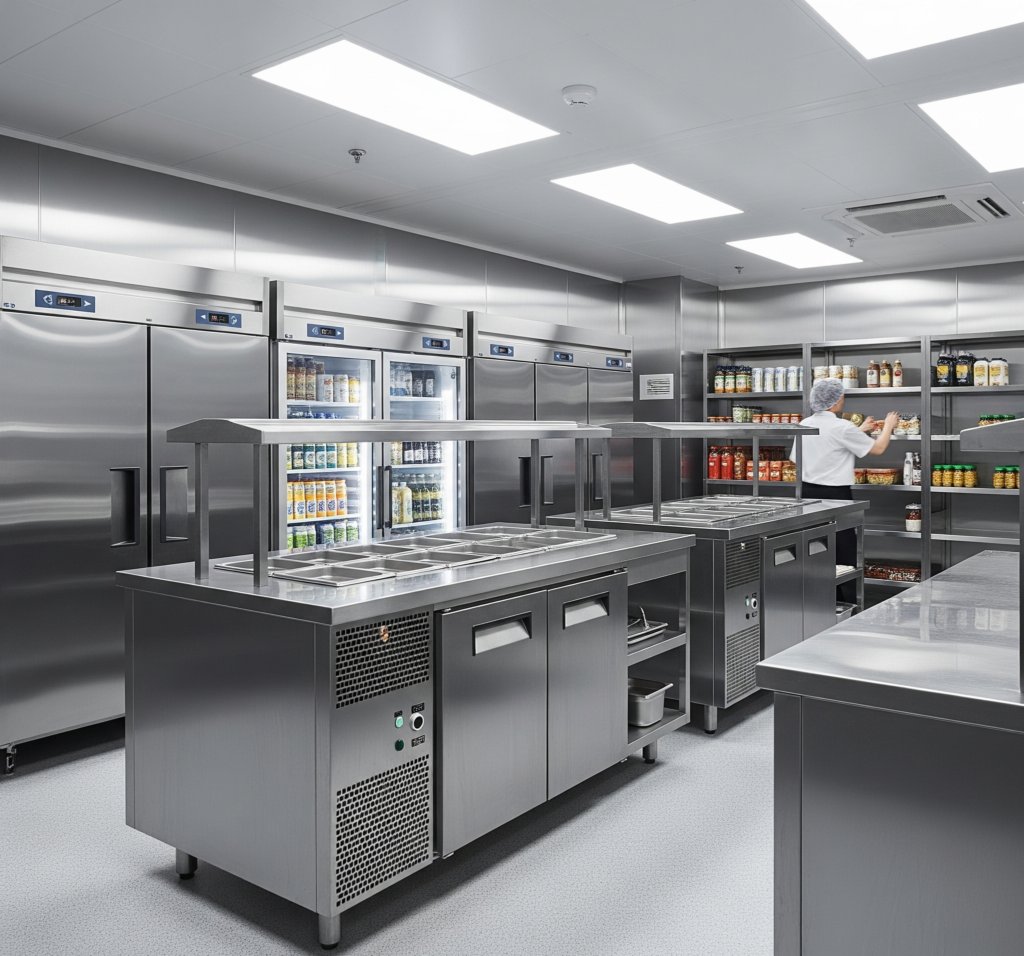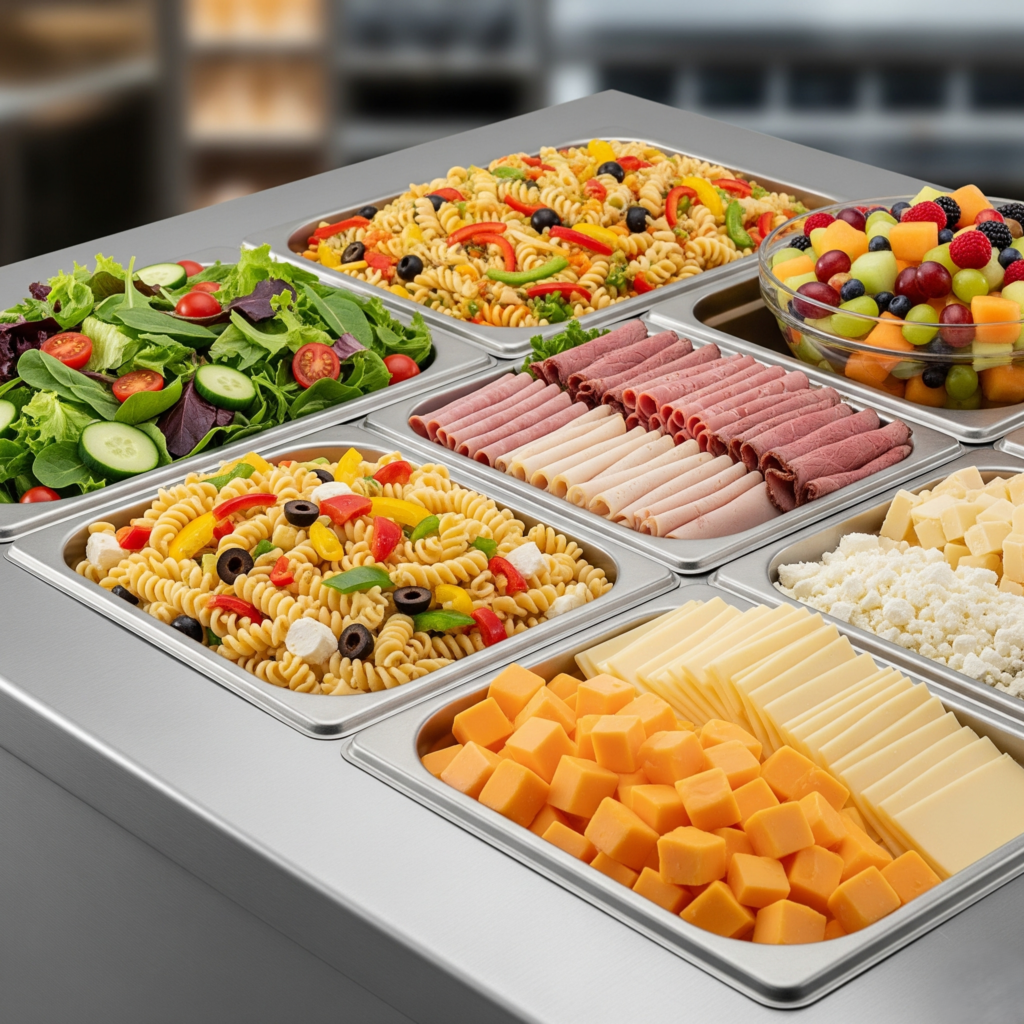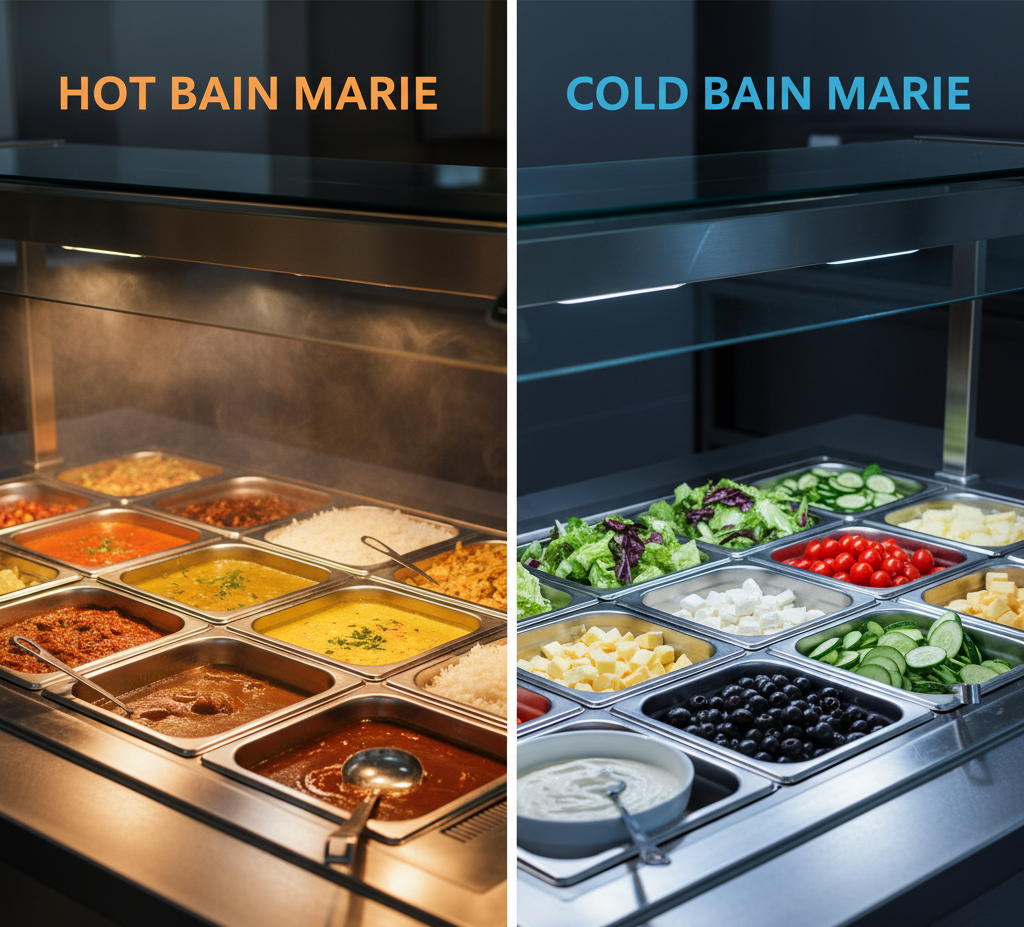Cold Bain Marie vs Hot Bain Marie: Key Differences & Uses

When it comes to food service, maintaining the right temperature of dishes is just as important as preparing them. That’s where Bain Maries come in handy. These versatile kitchen equipment pieces are designed to keep food at a consistent temperature—whether hot or cold—without compromising taste or quality. Muskan Equipments Co. offers premium-quality Bain Maries to meet every kitchen’s needs. But what’s the real difference between a cold Bain Marie and a hot Bain Marie? Let’s break it down.
What is a Bain Marie?
A bain marie, also known as a water bath or double boiler, is a system that uses indirect heat to keep food at a desired temperature. It consists of a large outer container that holds a temperature-regulating fluid (typically water or ice) and smaller inner containers that hold the food. This method prevents the food from being exposed to direct heat or cold, which can lead to burning, scorching, or uneven temperatures.
Hot Bain Marie

A hot Bain Marie is designed to keep cooked food warm for longer periods. It uses either water or dry heat to maintain food at safe serving temperatures.
How it Works:
A hot bain marie typically uses a water bath that is heated by an electric or gas element. The heat from the water is gently transferred to the food containers, maintaining a consistent, safe temperature. There are also “dry heat” bain maries that use a heating element directly beneath the food pans, which are often more energy-efficient and heat up faster.
Key Features:
- Keeps food hot without burning or overcooking
- Typically used in buffets, canteens, and restaurants
- Available in electric or gas-operated models
- Can hold multiple gastronorm pans for various dishes
Cold Bain Marie

A cold Bain Marie works as the opposite—it’s designed to keep food chilled and fresh. Instead of heat, it uses cooling mechanisms (like refrigeration or chilled water) to maintain low temperatures.
How it Works:
Instead of a heated water bath, a cold bain marie uses an outer container filled with ice or a refrigeration system.
Key Features:
- Keeps perishable items cool and safe
- Prevents food from wilting or spoiling
- Usually equipped with refrigeration units
- Available in countertop or full-size units
Cold Bain Marie vs Hot Bain Marie: Key Differences

| Aspect | Hot Bain Marie | Cold Bain Marie |
|---|
| Purpose | Keeps food hot at safe serving temps | Keeps food cold and fresh |
| Heating/Cooling | Uses water bath or dry heat | Uses refrigeration or chilled water |
| Best For | Soups, gravies, rice, pasta, curries | Salads, fruits, desserts, dairy items |
| Food Safety | Prevents bacterial growth in hot food | Prevents spoilage of perishable items |
| Placement | Buffets, restaurants, catering setups | Salad bars, dessert counters, delis |
Which One Should You Choose?
The choice between a cold and hot Bain Marie depends on the type of food you serve:
- If your business deals mainly with hot meals, a hot Bain Marie is essential.
- If you run a salad bar, café or dessert station, a cold Bain Marie is the better fit.
- Many large-scale restaurants and catering services use both to offer a complete dining experience.
Final Thoughts
Both cold and hot Bain Maries play a vital role in the food industry by keeping dishes at safe serving temperatures without losing freshness, flavor, or texture. Choosing the right one depends on your menu and service style—but for many businesses, a combination of both is the perfect solution.
👉 Muskan Equipments Co. sells the best quality of both cold and hot Bain Marie’s, helping your kitchen deliver food that stays fresh, safe, and delicious.
